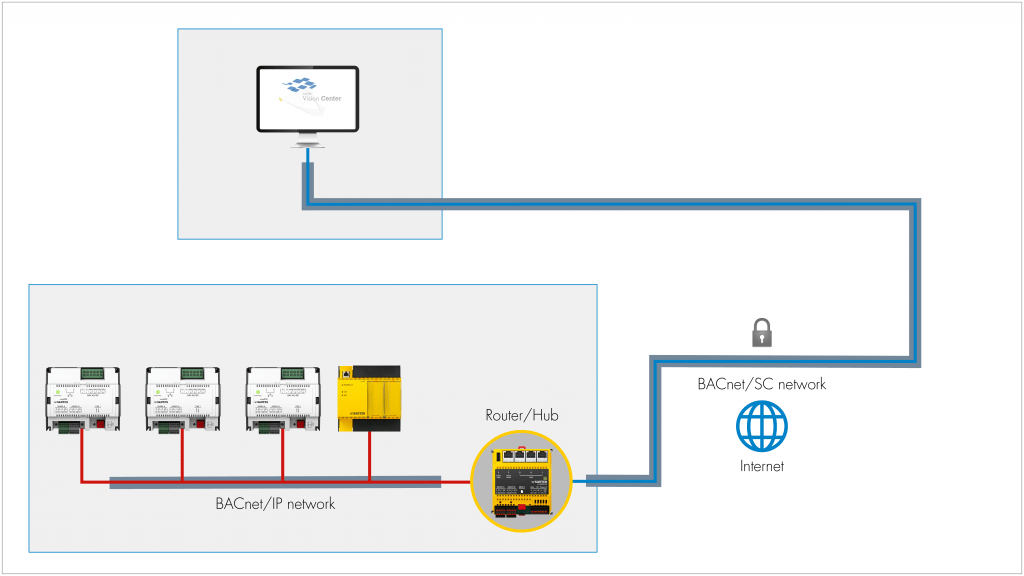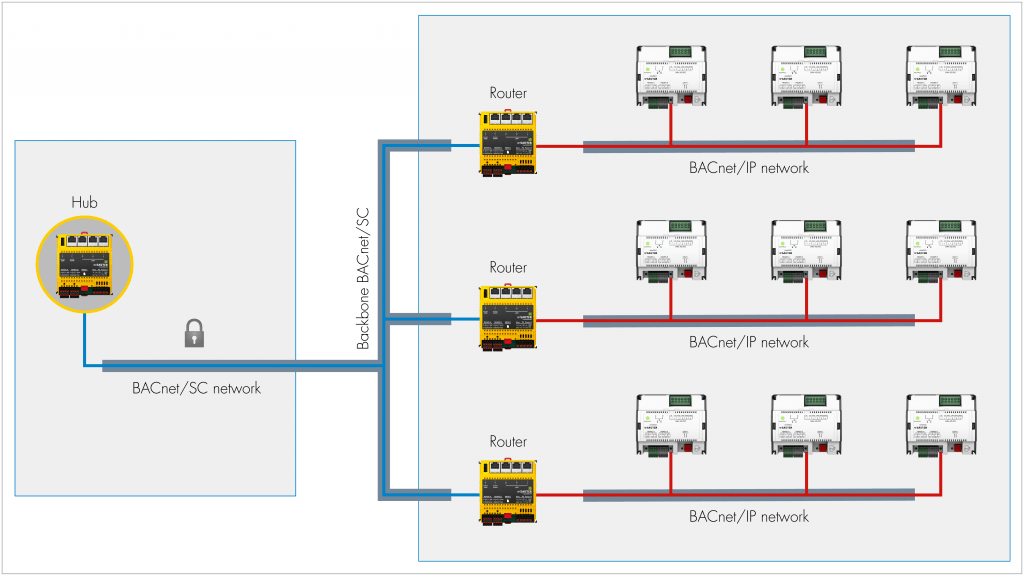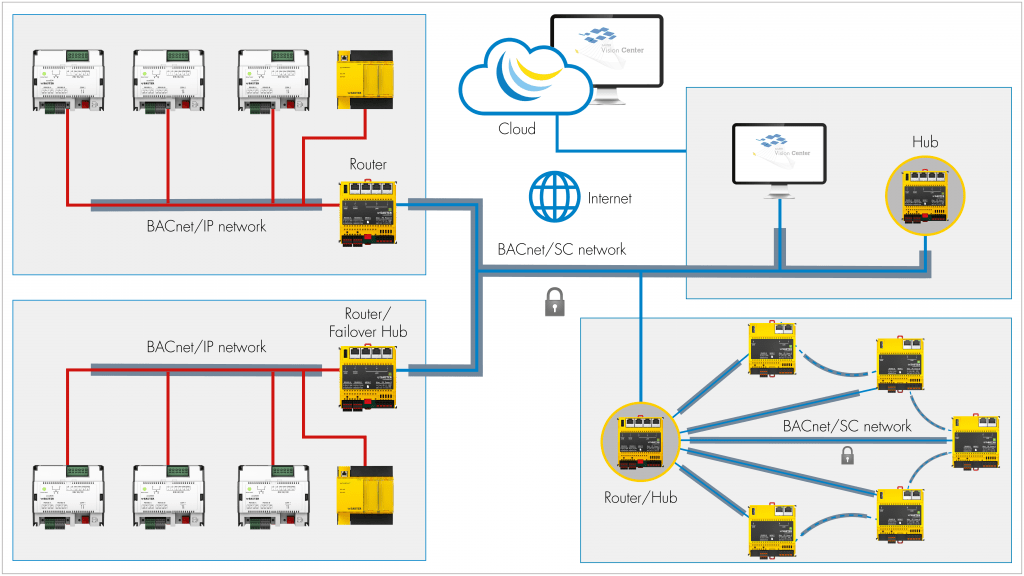BACnet/SC
BACnet/SC
The extension of the BACnet standard at SAUTER
BACnet is the communication standard in building automation. With BACnet/SC (Secure Connect) an additional network layer was added to this standard. There were two main reasons for this:
- The use of the internet and state-of-the-art IT infrastructures
The communication requirements for building automation have increased. More and more, the use of existing IT infrastructures and wiring is expected. This enables the internet to be used for data transmission, e.g. to connect other remote building sections and premises. Applications in the cloud also require data transmission via the internet. - Security requirements and data protection
Today, more than ever, building automation is subject to data protection requirements. Accidental or unauthorised access to the transmitted data can have serious consequences for the operation of the building technology.
BACnet/SC delivers the solution for both requirements without foregoing established BACnet services such as data recording (Trend Log) and time programmes (Scheduler, Calendar) in the station.
BACnet/SC solutions from SAUTER
SAUTER has implemented BACnet/SC in modulo 6 and SAUTER Vision Center. Additionally, SAUTER has developed a BACnet/SC router. It can be used to connect existing BACnet/IP systems with the BACnet/SC network. The BACnet/SC router can also function as a primary hub or a failover hub in the BACnet/SC network if no such hub is present in the network.
Scenarios
Further informations about BACnet/SC

Based on the common standards from IT, such as TLS 1.3, BACnet/SC-capable devices and systems from building automation can be integrated into state-of-the-art IT infrastructures. Here BACnet/SC communication runs via a central network component, the BACnet/SC hub. This must be present in each BACnet/SC network. If this hub fails, the function is performed by a reserve hub (failover hub).
Existing encryption systems and specifications within a network are taken over. In this way, the same security mechanisms used in the rest of the network are applied to the building automation.
In the case of connections across multiple networks, another advantage over existing BACnet/IP installations is that the configuration-intensive BBMD mechanisms are no longer necessary. This makes commissioning significantly easier. Also, it is no longer necessary to use VPN tunnels.
BACnet/SC is a new, additional network layer on top of existing layers such as BACnet/IP or BACnet MS/TP. Thus a BACnet/SC network can also be connected to a BACnet/IP network via a router. The communication remains compliant with the BACnet standard. It also makes it possible to connect existing BACnet systems via a BACnet/SC router. In this case, one has a “new” secure part (BACnet/SC) and an “old” non-secure part (BACnet/IP, BACnet MS/TP).
Instead of one big BACnet/SC network, the load can be optimised by connecting multiple BACnet/SC networks with each other via BACnet/SC routers.
Companies
Industry sectors
Services
Innovation
Your location

TLC TECHNICAL SERVICE TRADING COMPANY LIMITED
219/8 Duong so 5 Khu pho 3, Binh Hung Hoa Ward Binh Tan District, Ho Chi Minh City, Vietnam. Tel. +84 (0) 90 2540 929 long.nt(at)tl-controls(dot)com http://www.tl-controls.com/ Sauter Building Control International GmbH Hans-Bunte-Strasse 15 DE-79108 Freiburg i. Br. Tel. +49 761 510 54 05 Fax +49 761 510 54 20 ms.sbci(at)de.sauter-bc(dot)com www.sauter-controls.comYou need to load content from reCAPTCHA to submit the form. Please note that doing so will share data with third-party providers.
More Information





